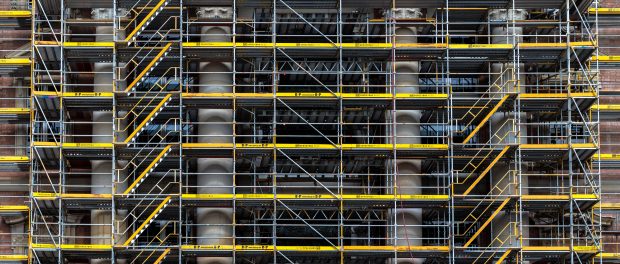The Importance of Scaffolding Tagging In Construction

Working with scaffolding is potentially extremely dangerous. This is a well-known fact, and we have all heard the horror stories of things going wrong when proper safety measures were not followed. As with all areas of the construction industry, working on scaffolding is tightly regulated and requires strict adherence to safety measures and procedures.
Among these many safety measures, proper use of scaffolding safety tags is essential. This article will look at scaffolding tags in more detail; what they are, how to use them, and why they are important to you.
What Is A Scaffolding Tag?
As anyone in the construction industry knows, signage is essential to the safety of anyone working or visiting a work site. Scaffolding tags are no exception. Scaffolding tags are used on scaffolding to illustrate whether they are compliant with Health and Safety Executive (HSE) regulations.
Scaffolding tags quickly show workers when scaffolding is safe to use and, more importantly, when not. Though simple, the necessity of avoiding workers mistakenly using unsafe scaffolding can not be understated.
Knowing What Is Safe and What Isn’t
Scaffolding tags are used after a full inspection, once it is determined whether the structure is safe or not. Scaffolding is commonplace across worksites. Without the correct scaffolding safety signage, the number of incidents would surely increase drastically.
Using tags on all scaffolding pieces enables workers to be more aware of the structural integrity of their surroundings. This allows them to operate safely and complete work on scaffolding that meets HSE requirements whilst avoiding hazardous scaffolding that does not.
Following The Law
The use of scaffolding tags themselves is not strictly a legal requirement. However, scaffolding safety inspections are. The tags offer an extra layer of inspection tracking while making the information easily accessible.
What To Include On A Scaffolding Tag
You can use safety tags to record information from the last inspection. You can record when the inspection was carried out and any required modifications to the scaffold tower that were identified. This allows workers to know when the next inspection is due and keep them updated with any necessary changes that have been made.
Colour Coding Your Scaffolds
One of the best ways to easily convey information with scaffolding tags is to use a colour-coded system. There is no set system that must be used by law, but using different colours according to the tags purpose can minimise mistakes and reduce accidents.
For example, you could use a tagging system where one colour is used to highlight inspection details, another to show scaffolding is suitable for heavy use tasks, and a third to show scaffolding is for light use tasks only.
Preventing Height Related Injuries
Whilst there are plenty of legal requirements regarding safety and preventing accidents from working at height, it is important to do whatever is possible to minimise the risks. This means taking extra measures to keep our workers informed and track inspection processes. Scaffolding tags assist this process by alerting someone before they ascend a scaffold that is not secure or safe.
Even on scaffolding that has past safety inspections, working at heights poses risks. Safety tags won’t fix all of the potential hazards. However, they are crucial in your overall safety measures and processes. And every unnecessary risk we remove from a construction site goes a long way to the overall safety of workers, visitors and passing pedestrians.
Although not a legal requirement, scaffolding safety tags are vital if you wish to make your worksite as safe as possible.


